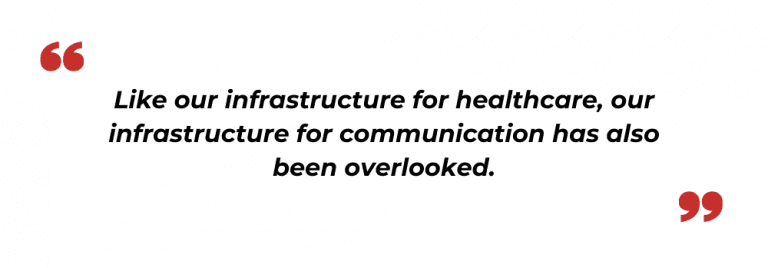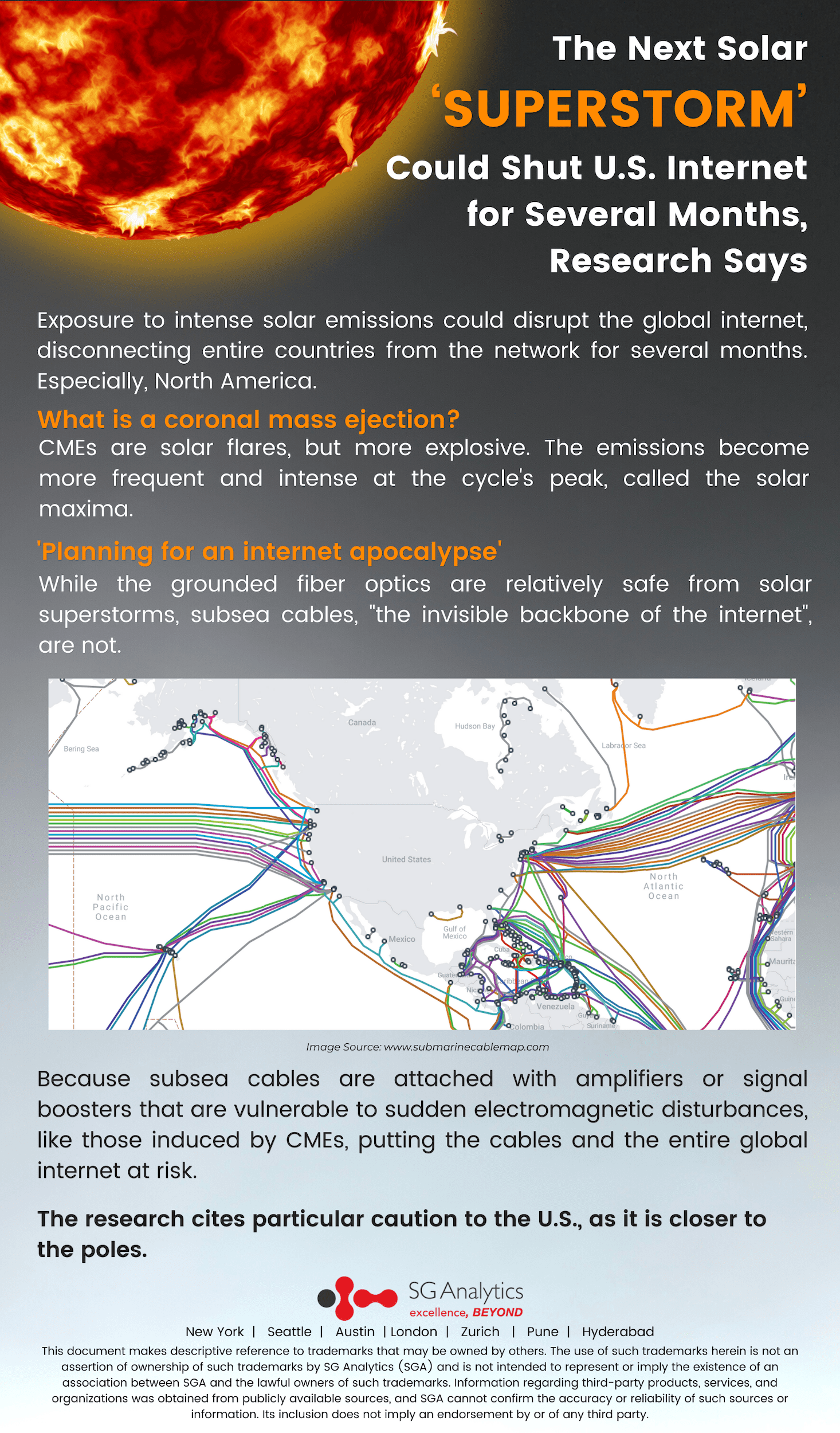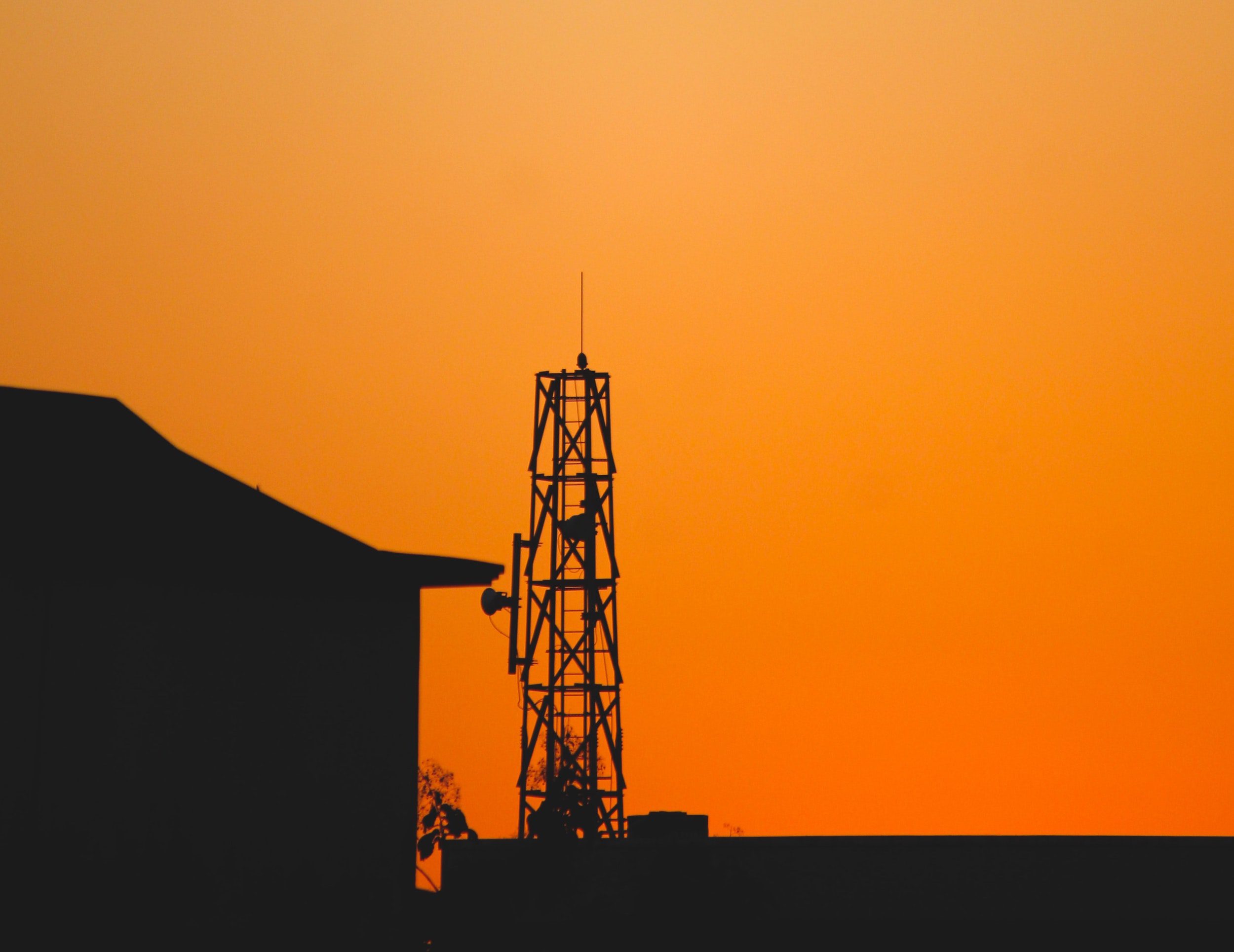PUBLISHED ON SEPTEMBER 6, 2021
IN TECHNOLOGY, BLOG ARCHIVES
Months into the pandemic, an old video resurfaced on the mainstream internet.
A TED talk, its host Bill Gates, presented a cogent argument for why the biggest threat to the world is not a nuclear war, but a viral outbreak. Instead of investing billions in the military and arsenal expansion, Gates argued that we must invest in healthcare, strengthening its infrastructure to prepare for and mitigate, even, the next global catastrophe.
In the future, “not missiles, but microbes” would be responsible for millions of deaths, warned Gates. And it has turned out to be the most poignant, and deadly, “I told you so” in recent history.

To make it right, we can only ensure that we avoid making such a grave mistake again in the future.
And we already have an opportunity to do just that.
According to new research presented at the SIGCOMM 2021 data communication conference, the current internet infrastructure is vulnerable to solar superstorms. Exposure to intense solar emissions could disrupt the global internet, disconnecting entire countries from the network for several months.
If the internet is a basic human right, if it directly or indirectly affects every single day of our lives, we must surely strengthen its infrastructure to prepare for — mitigate, even — the disruption.
Read more: Australia’s New Renewable Record and Whats Next for Solar in 2022
A solar, what?
Every 11 years or so, the Sun completes a solar cycle. The cycle sees the Sun emit what are called solar flares, as its magnetic field gradually evolves.
Solar flares are outbursts of charged particles from the Sun. It’s the charged particles that are responsible for the Northern and Southern Lights. The stunning display of lights is the result of their interaction with the Earth’s magnetic field at its poles.

The Sun also emits what are called Coronal Mass Ejections (CMEs). For the layman, CMEs are solar flares, but more explosive. So explosive, in fact, that they can knock out entire power grids. Indeed, they did, in 1989, when a moderate solar storm took down the Hydro-Quebec grid, leading to a 9-hour blackout (Scientific American).
Although, the emissions become more frequent and intense at the cycle’s peak, called the solar maxima. They are still rare, but less rare than they ordinarily are.
Why is this a problem now? Because the next peak — likely to be in the mid-2020s — is estimated to be the most intense since we began keeping records (National Geographic).
What the research argues is that if the unlikely event does occur, the current infrastructure would not be able to cope with its effects. Especially, North America.
Read more: 100% Clean Energy? The US Need Not Look Beyond Solar Wind and Hydropower. Here’s Why
‘Planning for an internet apocalypse’
The research, titled “Solar Superstorms: Planning for an Internet Apocalypse,” was presented by Sangeetha Abdu Jyothi, Assistant Professor, UC Irvine. It examined the effect of CMEs on the global internet.

CMEs, like a pandemic, are rare, but devastating. And while power grids are equipped to deal with the electromagnetic disturbance, the global internet framework is not, the research says.
If the fiber optics linking the cities are the pipelines within a household, the subsea cable linking two continents is the main water supply. According to the research, while the grounded fiber optics are relatively safe from solar superstorms, subsea cables, “the invisible backbone of the internet”, are not.
Why? Because at an interval of 50-150 kilometers, subsea cables are attached with amplifiers that repeat or boost the signal to prevent it from dying as it travels over long distances. The amplifiers are vulnerable to sudden electromagnetic disturbances, like those induced by CMEs, putting the cables, and therefore, the global internet at risk.

The research cites particular caution to the US, which is closer to the poles, where the effects are most intensely felt.
Also read: Future of IoT - Internet of Things Trends 2022
And that’s what puts the entire network at risk.
Even though Asia, situated near the equator, would be less exposed, an internet outage in the US — for several months, at that — could seriously destabilize the world economy. In the US alone, an outage could lead to over $7 billion in losses per day (Forbes).










